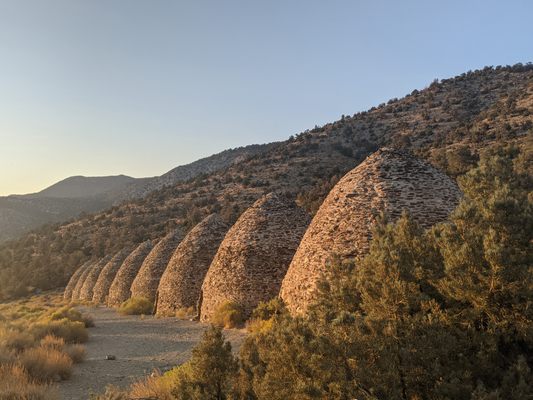About
In 1875, lead ore was discovered in California’s Argus Range. Shortly after its discovery, George Hearst (future Senator and father of William Randolph Hearst) purchased the land and formed the Modoc Consolidated Mining Company to mine the ore for silver from the area.
After the company depleted most of the area’s limited supply of wood, Hearst ordered the construction of ten kilns to make charcoal from pine logs. The kilns were completed in 1877 and built 25 miles from the mine in a more wooded area. The 25-foot high limestone kilns, constructed from local outcroppings and mortared with lime, gravel, and sand, employed around 40 men in the production and transportation of charcoal bushels to the area near the mine. After only two years of operation, the mines were shutdown and the kilns abandoned due to worsening ore quality.
Located in what is now Death Valley National Park, the well-preserved beehive-shaped kilns can be freely explored by visitors.
Related Tags
Know Before You Go
Located on Wildrose Canyon Road, 6.5 km east of the intersection with Emigrant Canyon Road. Road conditions inside Death Valley are inconsistent and can vary depending on the time of year. Check the park's road conditions page for the latest updates before attempting to drive to the kilns.
Community Contributors
Added By
Published
March 28, 2011
Sources
- Ghost Town: Wildrose Characoal Kilns: http://www.ghosttown.info/ca/wildrose/index.html
- Southern California's Best Ghost Towns: A Practical Guide: http://books.google.com/books?id=A8s_7zGgQRAC&lpg=PA18&ots=5ndL8YEelQ&dq=Wildrose%20Charcoal%20Kilns%20to%20Cartago%20ca&pg=PA43#v=onepage&q=Wildrose%20Charcoal%20Kilns&f=false
- Ghost Town Seekers: Death Valley, Wildrose Canyon Kilns: http://www.robertwynn.com/Wildrose.htm
- Desert Gazette: Death Valley National Park: http://digital-desert.com/death-valley-history/wildrose-kilns.html
- Wikimapia: Wildrose Characoal Kilns: http://wikimapia.org/1939951/Wildrose-Charcoal-Kilns



































